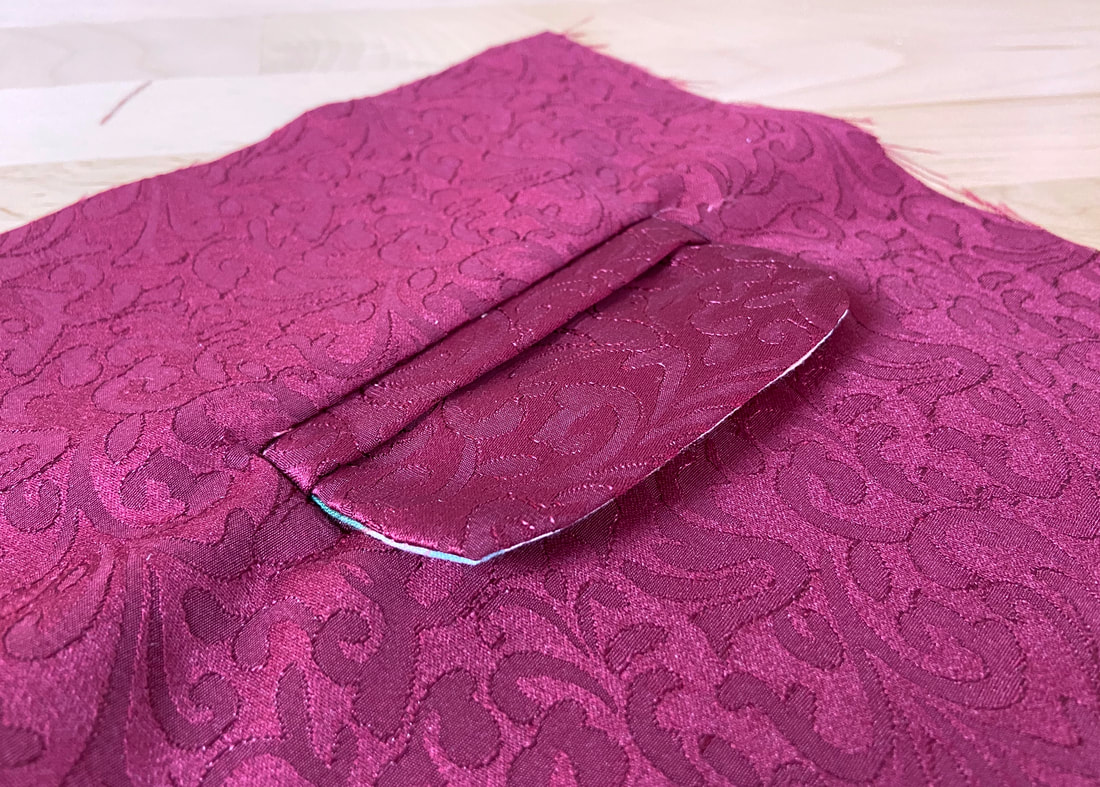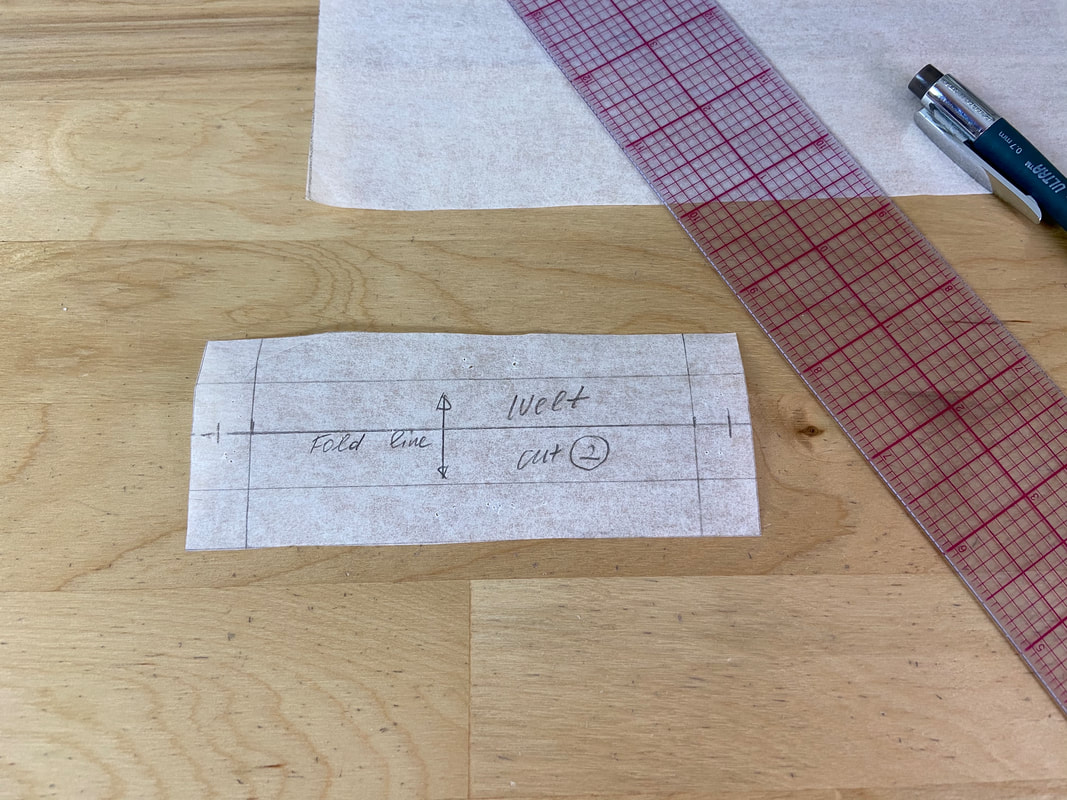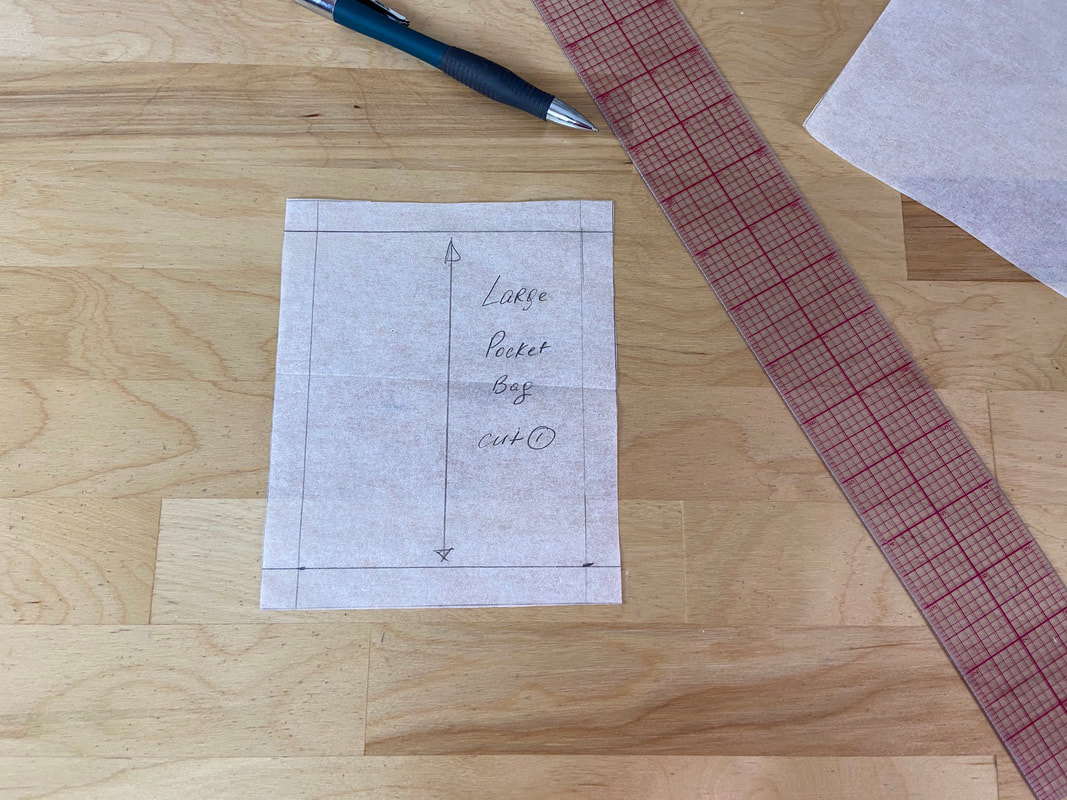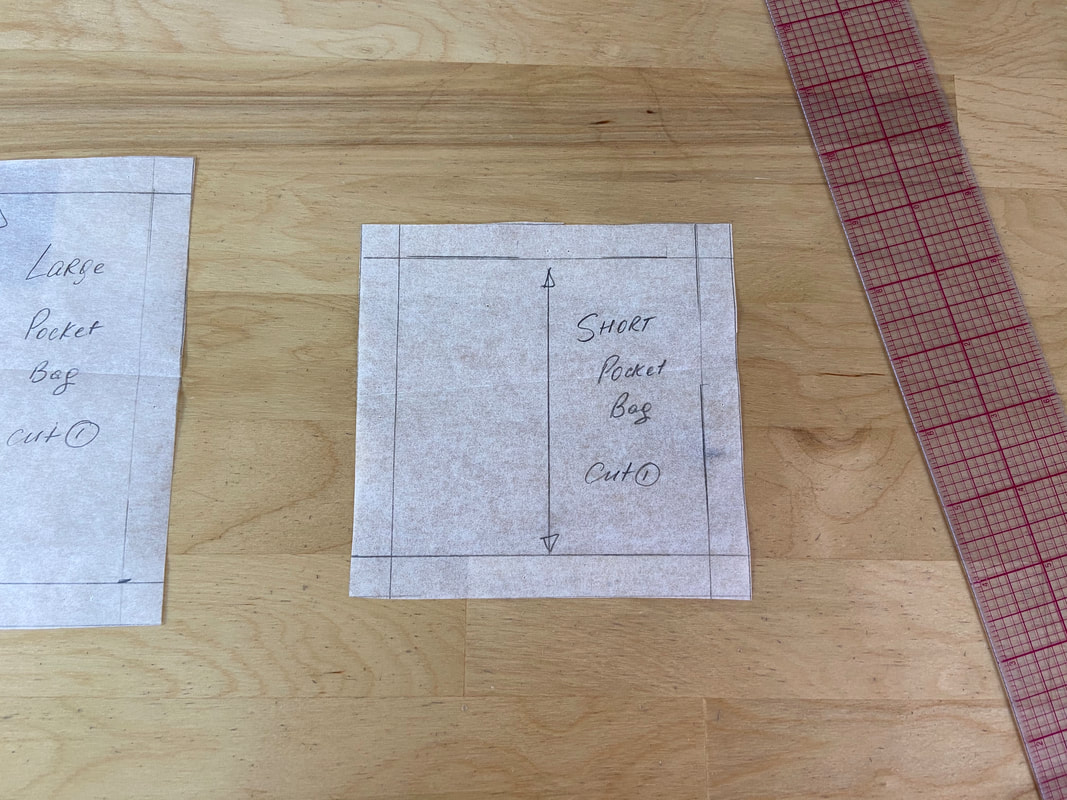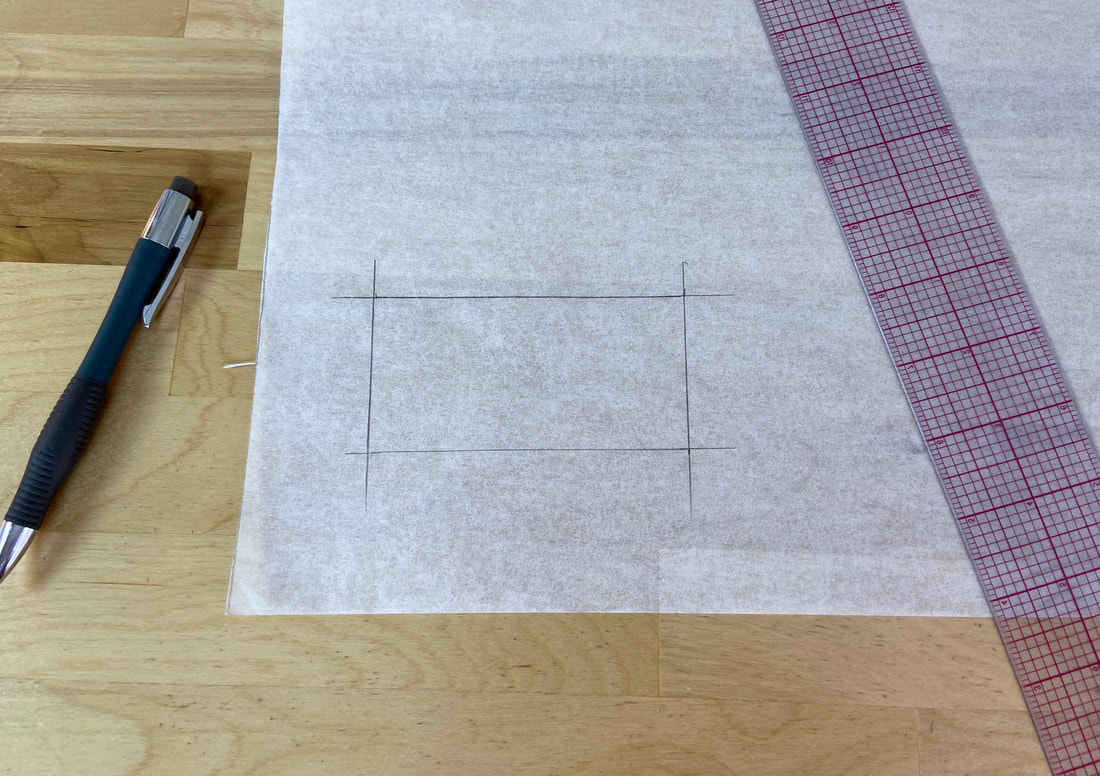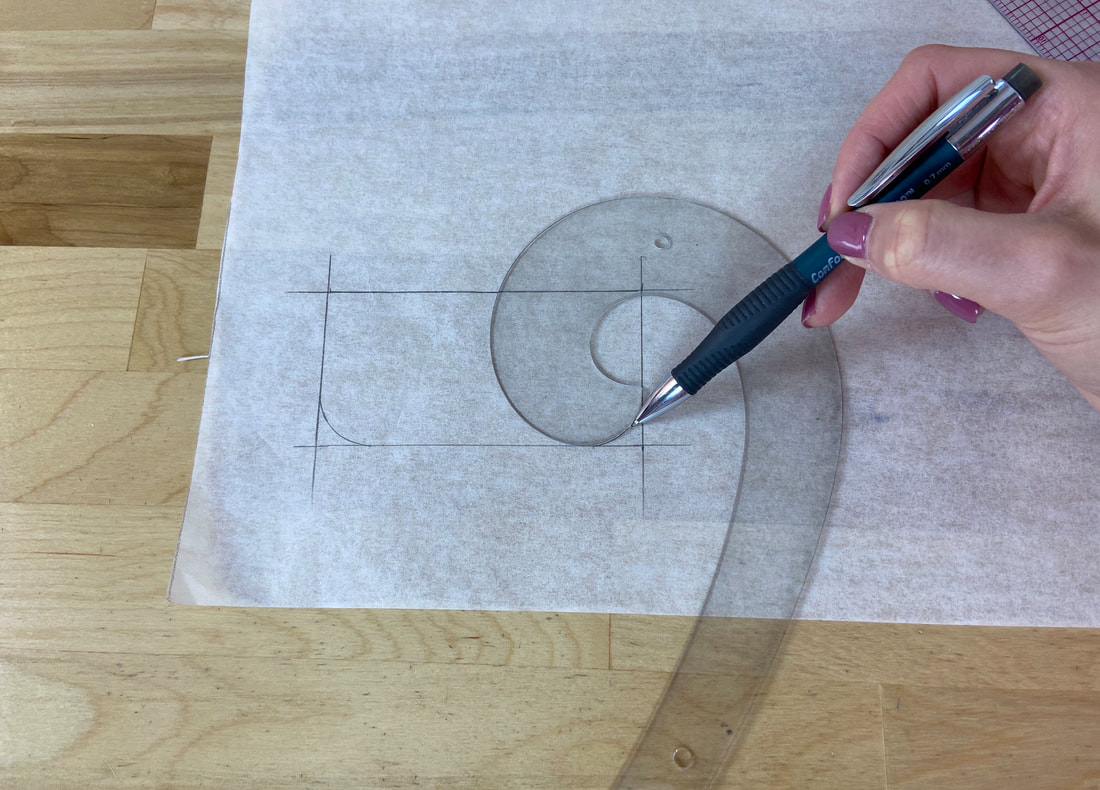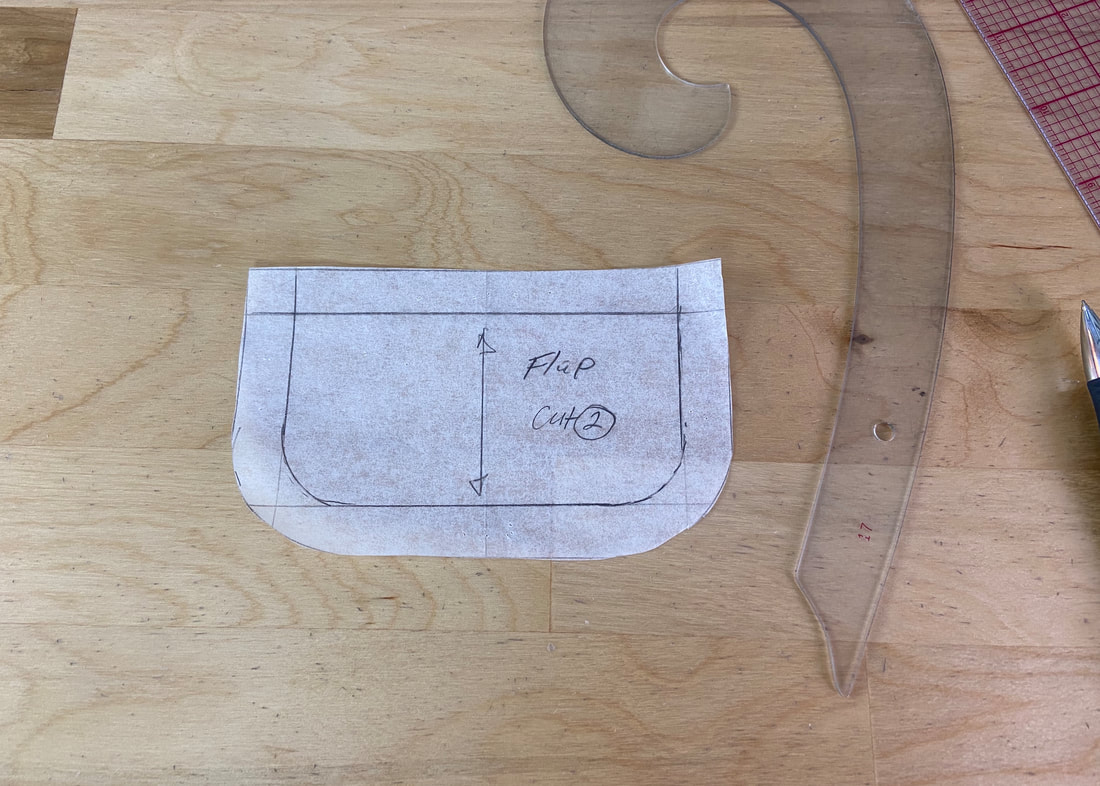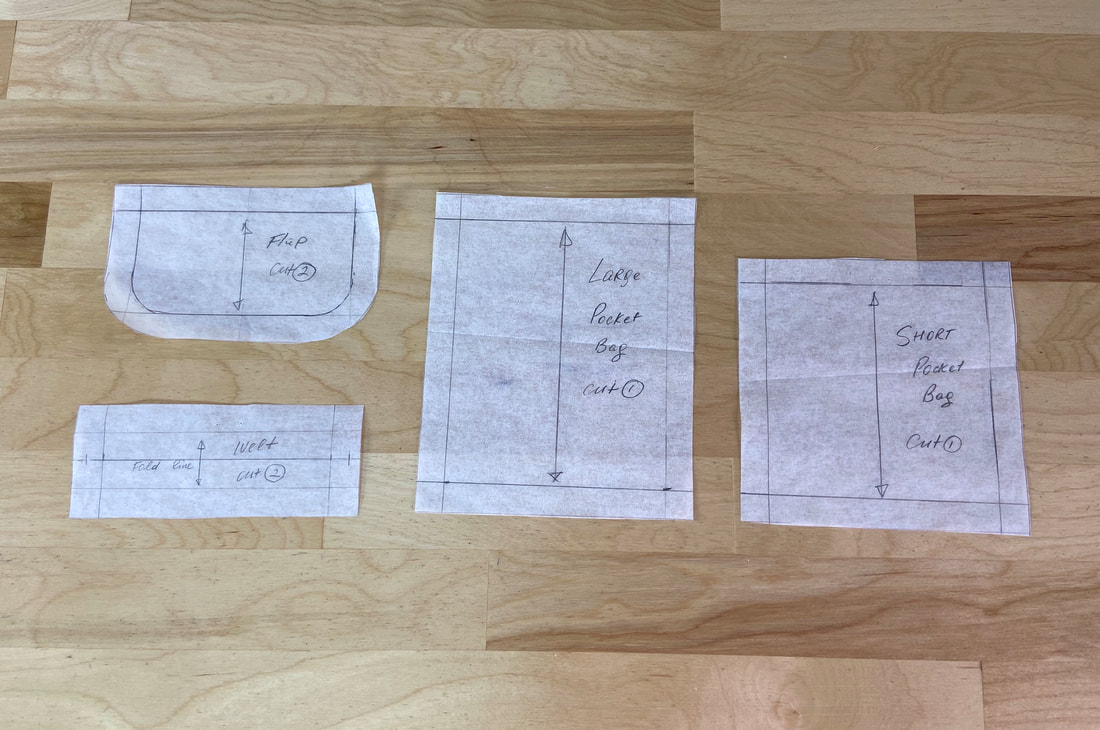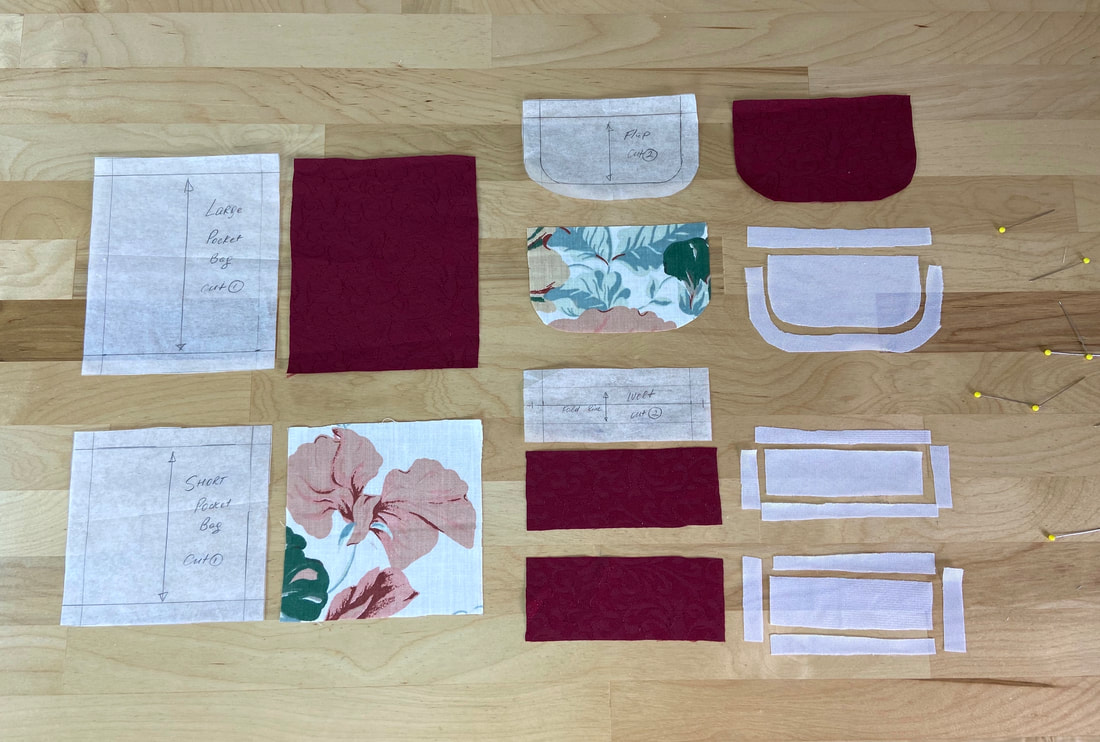Drafting Sewing Patterns For A Double-Welt Slash Pocket With Flap
A double-welt slash pocket with flap is a classic tailored pocket style. It requires separate pieces for the individual welts and flap, as well two pocket pieces to complete the pocket bag.
Although you could measure and mark these pieces directly on your fabric, you may find it easier to draft a set of patterns according to your desired pocket measurements and re-use them any time you sew a welt pocket with flap.
Here's a simple way to draft a pattern set for this classic slash pocket application:
Although you could measure and mark these pieces directly on your fabric, you may find it easier to draft a set of patterns according to your desired pocket measurements and re-use them any time you sew a welt pocket with flap.
Here's a simple way to draft a pattern set for this classic slash pocket application:
The welt patterns: This pocket application requires two identical welt pieces. Each welt is folded onto itself to form a self-finished folded edge that covers half of the pocket opening.
To draft a welt sewing pattern, measure a rectangle that is double the length and width of the desired finished welt (in the final pocket application). Add 1/2" seam allowance along all edges, and mark a center fold line as pictured above. Mark a grainline and note "cut 2 " on the pattern piece as you'll need to cut two pieces, one for each welt.
In this instance, the slash pocket opening is 1" tall and 4" wide.
To draft a welt sewing pattern, measure a rectangle that is double the length and width of the desired finished welt (in the final pocket application). Add 1/2" seam allowance along all edges, and mark a center fold line as pictured above. Mark a grainline and note "cut 2 " on the pattern piece as you'll need to cut two pieces, one for each welt.
In this instance, the slash pocket opening is 1" tall and 4" wide.
The Large Pocket Piece: Draw a rectangle that is the same width as the pocket opening (or the welt shown above). The length should be 1.5" plus the desired pocket depth. In this case, the pocket depth is 5".
The final rectangular pocket piece will measure 4" by 6.5" (pocket depth (5") plus 1.5"). Again, add 1/2" seam allowance along all edges. You will need to cut just one (1) large pocket layer.
The final rectangular pocket piece will measure 4" by 6.5" (pocket depth (5") plus 1.5"). Again, add 1/2" seam allowance along all edges. You will need to cut just one (1) large pocket layer.
The Short Pocket Piece: The short pocket piece should measure the same width as the pocket opening and 1/2" longer than the desired pocket depth (which is 5" in this example). As a result, the resulting short pocket piece will measure 4" x 5.5" (pocket depth of 5" plus 1/2"). To complete the pattern, add 1/2" seam allowance along all edges. Again, you will need to cut one (1) short pocket piece.
The Flap: To draft a curved flap pattern, start by drawing a rectangle that is as wide as the pocket opening (4") and as long as the desired final flap.
Curve the rectangle's bottom corners using a french curve as shown.
Add 1/2" seam allowance along all edges, and cut the finished flap pattern along the marked seam allowance lines.
The completed pattern set should include: 1 welt pattern (cut 2 pieces), 1 large pocket piece pattern (cut 1 piece), 1 short pocket piece pattern (cut 1 piece), and a flap pattern (cut 2 pieces).
Here's how to cut your pocket components:
1. Cut two identical welt pieces and two matching interfacing pieces. Before fusing, trim the seam allowance off the interfacing to minimize bulk in the finished pocket application,
2. Cut two flap pieces: 1 flap self and 1 flap lining. The self layer will serve as the flap's face side while the lining will clean-finish the flap edges and be enclosed on the flap's underside. Cut a matching interfacing piece to stabilize the flap layers. Trim the 1/2" seam allowance off the flap interfacing.
3. Cut 1 large pocket piece using either the garment fabric, or a contrast fabric of your choice. This layer will only be visible when opening the pocket.
4. Cut 1 short pocket piece from a lining (or lightweight) material. This layer will complete the pocket bag and be visible from the application's face side when opening the pocket.
1. Cut two identical welt pieces and two matching interfacing pieces. Before fusing, trim the seam allowance off the interfacing to minimize bulk in the finished pocket application,
2. Cut two flap pieces: 1 flap self and 1 flap lining. The self layer will serve as the flap's face side while the lining will clean-finish the flap edges and be enclosed on the flap's underside. Cut a matching interfacing piece to stabilize the flap layers. Trim the 1/2" seam allowance off the flap interfacing.
3. Cut 1 large pocket piece using either the garment fabric, or a contrast fabric of your choice. This layer will only be visible when opening the pocket.
4. Cut 1 short pocket piece from a lining (or lightweight) material. This layer will complete the pocket bag and be visible from the application's face side when opening the pocket.

